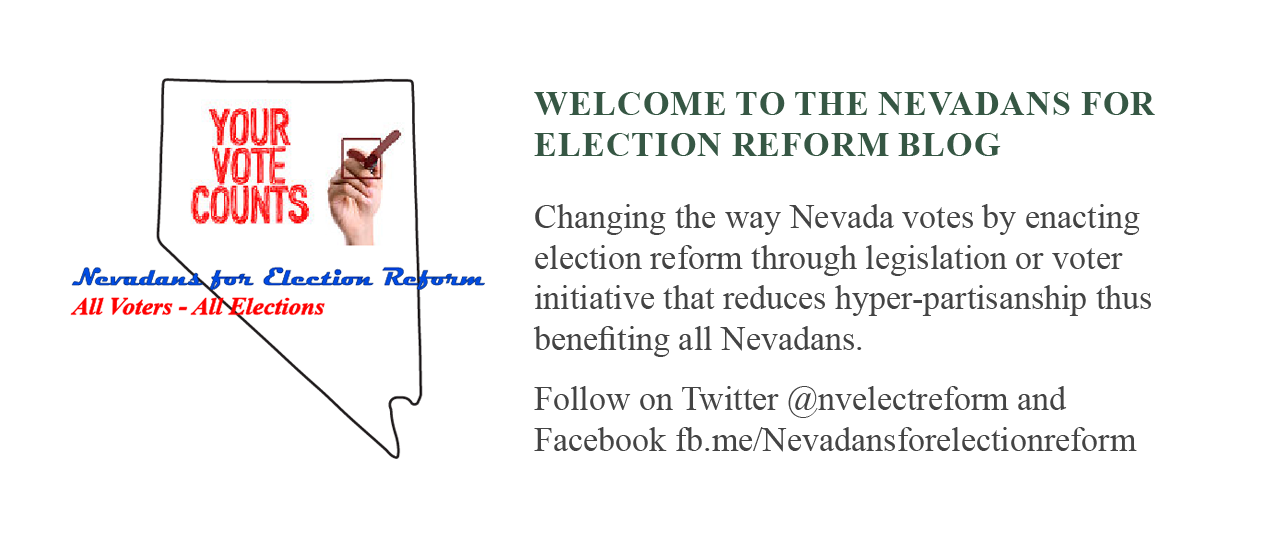Politicians,
whether incumbent or candidate, do not know what their constituents think. Even
worse, they may not care. Is this important? What impact could this have on
voter turnout? And how does the Nevada Election
Modernization and Reform Act (NEMRA – 2017) help resolve this problem?
In a study
dated July 17, 2015; “What Politicians
Believe About Their Constituents: Asymmetric Misperceptions and Prospects for
Constituency Control”, David E. Broockman, Assistant Professor, Stanford
Graduate School of Business and Christopher Skovron, Graduate Student,
Department of Political Science, University of Michigan studied the perception
of constituent opinion of nearly 2,000 state legislators then compared those
perceptions to the actual opinions of voters in their districts. The results
raise concerns that state legislators are out of touch with the true opinions
of their constituents. Campaign activity, the time when politicians have the
most direct contact with voters, does not appear to change this mismatch. Given
that Broockman and Skovron contacted all candidates, both incumbent and
non-incumbent, running for election in 2012 as of August of that year (9,825 of
10.131 for whom they could get contact information) and had a response rate
19.5% (25.6% if just those contacted are used as the base), candidates in
Nevada were most likely included in this study.
Overall,
politicians’ perception of their constituents’ opinion was off by over 10%.
Conservative candidates and incumbents over-estimated their constituents’
opinion on conservative issues by more than 20%. These numbers did not change
when the authors did a follow-up study immediately after the election in
November. Additionally, candidates running in the same district had different
perceptions of the opinions of the same constituents more than 20% of the time.
You can read the study here.
If
public opinion is supposed to be the force behind decisions made by our elected
representatives and their perception of that opinion is not accurate, just
whose opinion is being represented? Better yet, how can these wrong perceptions
be corrected?
Is
this important? Yes. Representative democracy requires elected officials to
accurately understand the opinions of those they represent and express that
understanding so voters can make more informed decisions at the polls. Likewise
that understanding will allow those elected to make decisions that realistically
reflect the desires of their constituents. Perhaps this is why voters believe
politicians represent only the interests of a select few.
What
impact could this have on voter turnout? Potentially quite a bit. When voters
do not see their opinions being addressed and / or acted upon by those they
elect, they could lose interest. Attitudes of “why bother” and “my vote is not
important” are allowed to take hold.
For
incumbents and candidates to have an accurate perception of their constituents
opinions they need to focus on a greater number of potential voters. At the
same time, voters need to believe their involvement in the electoral process
matters and their opinions are valued. This is how the Nevada Election
Modernization and Reform Act (NEMRA
– 2017) can help resolve this problem.
By
focusing on a single general election held in November using ranked choice /
instant runoff voting (RCV / IRV), candidates must concentrate on the entire
electorate rather than just 20% of political party loyalists (average turnout
for primary elections where most races are really decided). They are not only
looking to be the first choice of voters, but also looking to be the second
choice of voters not willing to fully support them. To be successful, they will
have to accurately comprehend the opinions of all their constituents and convey
how they will act on those if elected. Elected officials win because by
accurately understanding the beliefs of their constituents they can make
decisions reflecting the true will of those they represent. Constituents win by
knowing those they elected truly represent them, that their opinions and their
votes matter.
In
February, 2017, those we elect or re-elect next year to represent us in the
Nevada legislature will take their seats in either the assembly or senate. They
can show their willingness to discuss this important issue by filing a bill
draft request (BDR) and then introducing the bill. By enacting NEMRA – 2017,
the Nevada legislature can take the lead and show the nation that state leaders
are willing to change the electoral process for the better, recognizing the
importance of all voters.
